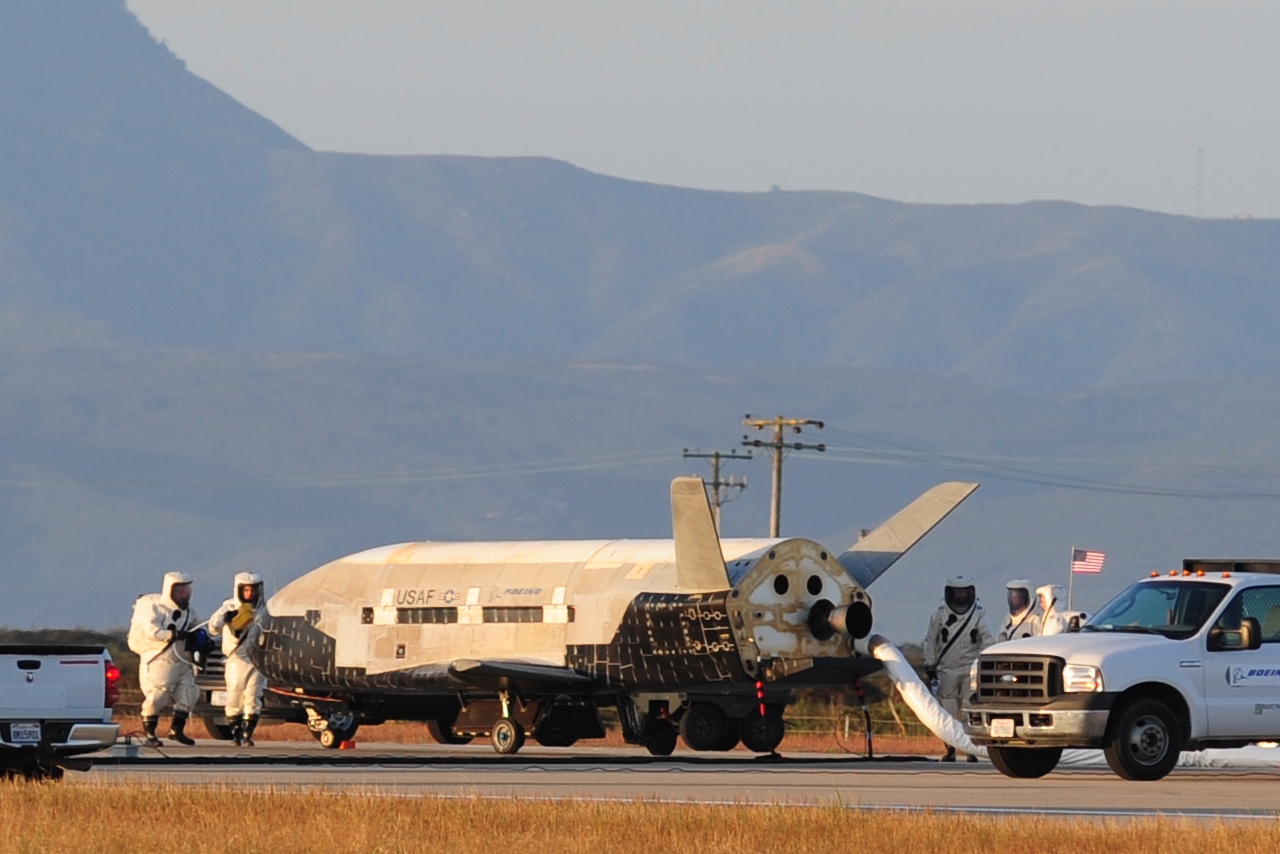
Watching the Air Force's robotic X-37B space plane return to Earth Saturday (June 16) after 15 mysterious months in orbit was a spectacular experience, said an official who witnessed the landing.
The unmanned X-37B spacecraft made quite an impression as it streaked through the gray predawn sky and landed at California's Vandenberg Air Force Base at 5:48 a.m. local time Saturday (8:48 a.m. EDT; 1248 GMT). The smooth landing ended a secret space mission that lasted more than a year.
"It was quite thrilling to be able to see that vehicle at the very end," Air Force Col. Dave Hook, commander of the 30th Operations Group, said in a recent video released by Vandenberg.
"When you finally pick it up, it's dropping like a rock. It comes down very quickly and does the final flare just before touching down, travelling in excess of 200 miles per hour," Hook added. [Video: X-37B Lands at Vandenberg]
A robotic mini-shuttle
The X-37B looks a lot like NASA's now-retired space shuttle, only much smaller. The space plane measures just 29 feet (8.8 meters) long and 15 feet (4.5 m) wide, with a payload bay about the size of a pickup truck bed. For comparison, two X-37Bs could fit inside the payload bay of a space shuttle.
"You don't get a sense for how small it is until you actually go out there on the airfield and see it," Hook said.
Get the world’s most fascinating discoveries delivered straight to your inbox.
The X-37B, also known as Orbital Test Vehicle-2 (OTV-2), launched on March 5, 2011, from Florida's Cape Canaveral Air Force Station atop an Atlas 5 rocket. Its flight was the second-ever space mission for the X-37B program; the first was flown by OTV-2's sister ship, OTV-1.
OTV-1 blasted off in April 2010 and stayed aloft for 225 days, well below the supposed 270-day orbital limit for the X-37B. But OTV-2 shattered that limit, zipping around the planet for 469 days.
Mystery mission
It's unclear exactly what OTV-2 was doing up there for so long, because details of the vehicle's mission are classified, as are its payloads. The secrecy has led to speculation — notably from China — that the X-37B may be a space weapon of some sort.
The Air Force has consistently denied this charge, insisting that the space plane's main task is to test out new technologies for future satellites.
That's probably broadly true, said Brian Weeden, a technical adviser with the Secure World Foundation and a former orbital analyst with the Air Force.
Weeden, who published a report in 2010 that investigated the X-37B and its likely missions, suspects OTV-2 was observing the Middle East and/or Afghanistan with some brand-new spy gear. OTV-2 may have stayed in orbit for 15 months partly because the Air Force wants to see how the sensors, and the vehicle itself, hold up for long stretches in space, he said.
But OTV-2's mission may have graduated from strictly experimental to partly operational at some point, Weeden added.
The Air Force may want to determine how OTV-2's payloads "can contribute to the warfighter," he told SPACE.com shortly before the space plane landed. "I think that may be a reason why it's stayed up for so long. There's a good chance that whatever it's doing is actually contributing."
The Air Force plans to launch another X-37B mission soon, perhaps as early as this fall. OTV-1 will fly the next one, officials have said.
Follow SPACE.com senior writer Mike Wall on Twitter @michaeldwall or SPACE.com @Spacedotcom. We're also on Facebook and Google+.




